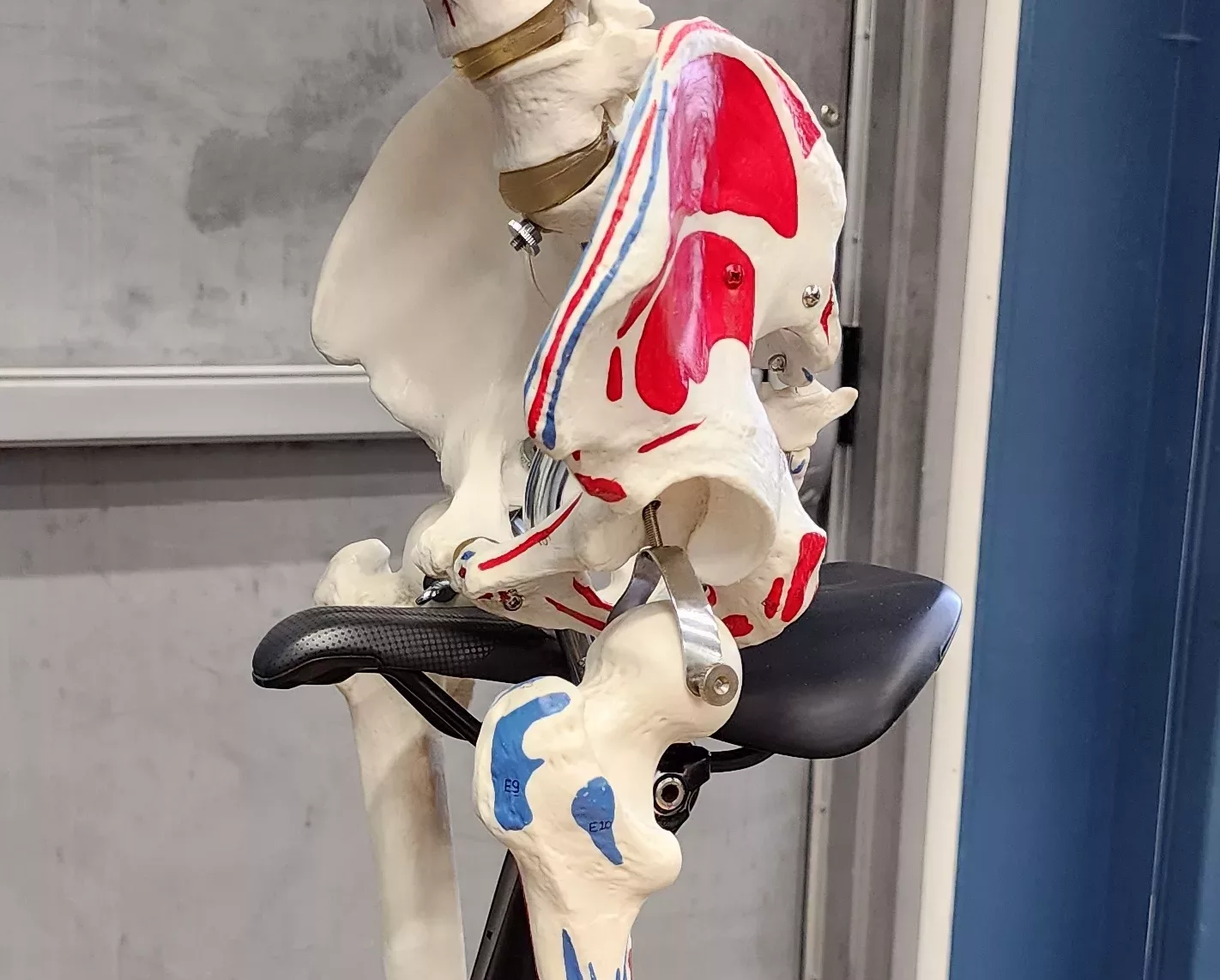
Saddle Tilt and Back Pain: Enhance Your Bike Fit for Comfort
Lower back pain is a common complaint I see when doing bike fittings for clients. While various factors can contribute to back pain, a sub-optimal saddle tilt is often one of the causes. A proper saddle tilt is an important part of maintaining a good lumbar spine position and letting you ride with comfort for longer rides. Let’s dive into how saddle tilt affects your lower back and how to achieve the best position for a pain-free riding.
Understanding the Impact of Saddle Tilt
When riding a road bike, the rider’s torso must be inclined to reach the handlebars. Ideally, this motion should come from the hips and not the lower back. Riding with your lower back in too much flexion (rounded) can lead to discomfort, especially during longer rides. It places additional strain on the extensor muscles of the lumbar spine which can become fatigued and achy with more time spent in this position. This is not the case for all riders and some can find this position comfortable, but in general a more neutral back position tends to suit most people.
The Optimal Saddle Tilt
I find that keeping the nose of the saddle down by 1-2 degrees tends to be the best position to help prevent lower back pain. To achieve a good lower back position, the rider needs to be able to roll their pelvis forward when reaching for the handle bars. The image below shows a rounded spine position compared to a neutral spine. You can try finding a neutral position on your next ride by sitting up tall on your bike then rolling your pelvis forward as you reach for the handle bars.


Challenges in Achieving Proper Position
There are two common issues that can make achieving this position difficult.
Tight Hamstrings: Tightness in the hamstring muscles can make rolling the pelvis forward challenging. The hamstrings attach to the pelvis on your sit bones, and if they are tight, they restrict this forward roll. As a result, the compensation often comes from the lumbar and thoracic spine, which can lead to lower back discomfort previously described.
Saddle Tilt: If the nose of the saddle is too high, it can act as a block, preventing the pubic bone and pelvis from rolling forward. This, too, can force the spine to compensate, resulting in lower back discomfort. Conversely, if the nose of the saddle is tilted too low, the rider may feel like their back is too extended or that they are sliding forward into the handlebars, which can also lead to pain when riding.

Checking Your Saddle Tilt at Home
You can check your saddle tilt at home with a couple simple steps:
Step 1: Ensure Your Bike Is Level. Start by making sure your bike is sitting level. This can be done with your bike on a bike trainer. From here you can measure from the ground up to the front and rear axles to confirm that the measurements are the same on both sides. If not, prop the lower end up until they are level.

Step 2: Measure Saddle Tilt. Place something flat on the top of the saddle, making sure it runs from front to back. Then, place a digital level or a phone level app on top to get a measurement. Use a level that gives you a degree reading for more precise positioning.

While the final angle can vary from ride to rider a good starting point is having the nose of the saddle down 1-2 degrees. From here you can see if higher or lower works better for you. Additionally, if your pain is coming on when riding on the trainer only you may need to ensure your bike is level on the trainer with the same process above.
Saddle tilt adjustments are subtle but can significantly impact comfort. Proper saddle tilt can prevent lower back pain, allowing you to enjoy longer, more comfortable rides. Remember, the key is to ensure your pelvis can roll forward correctly without compensating through the spine.
If you are in the Edmonton area and need help finding your ideal riding position a physiotherapy bike fit can help! We can help maximize your comfort and improve your overall riding experience. Learn more about the benefits of our physiotherapy bike fit here. Start riding more comfortably and pain-free today with a clinical bike fit a Connect Physiotherapy & Exercise!
